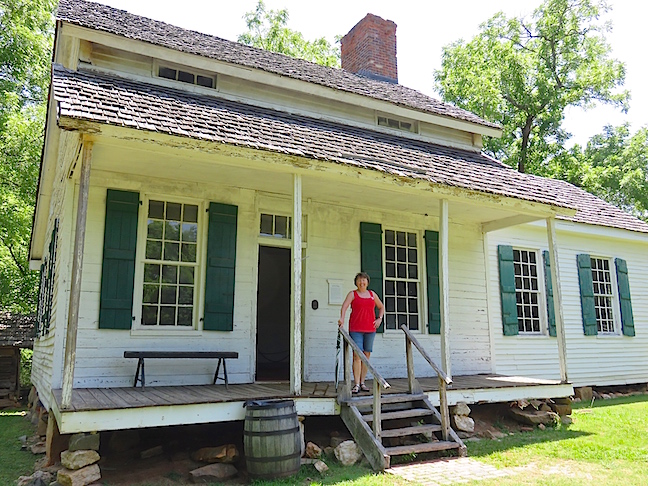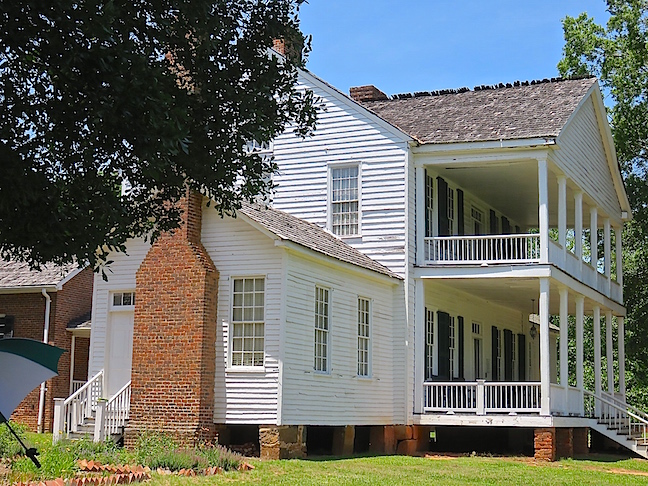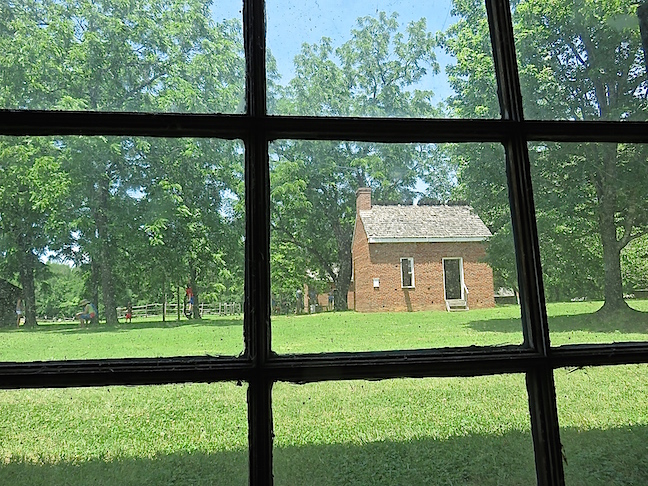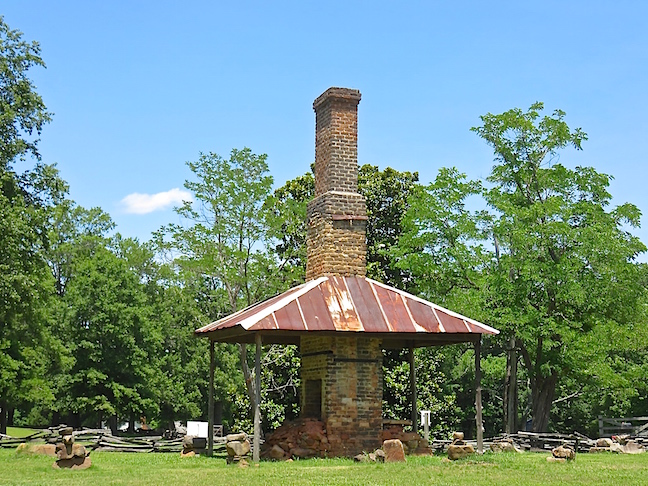Historic Brattonsville showcases colonial and antebellum buildings on former plantations. Staff clad in historic garb depict life in this rustic South Carolina setting from the 1780s to the 1850s.
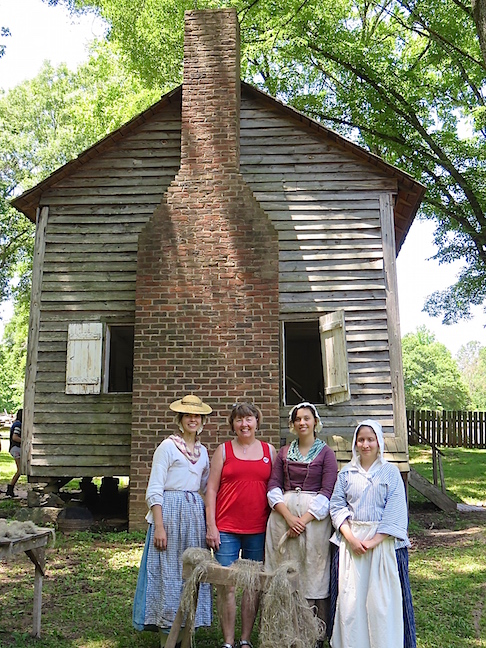
These young ladies showed us how flax is prepared for making cloth. The soft flax fiber and light colored tow left after processing spawned the terms “flaxen hair” and “towheaded.”
This was home to William and Martha Bratton around 1776. Built of siding over square logs, with one room down and one room up, they raised 8 children in it.
William Bratton was a Patriot militia Colonel. A tip from his trusted slave Watt allowed him to make a surprise ambush on Captain Christian Huck and his 150 British regulars as they slept on Williamson’s plantation nearby. It was the first militia victory of the Revolutionary War and helped turn the tide of defeats suffered in the deep south.
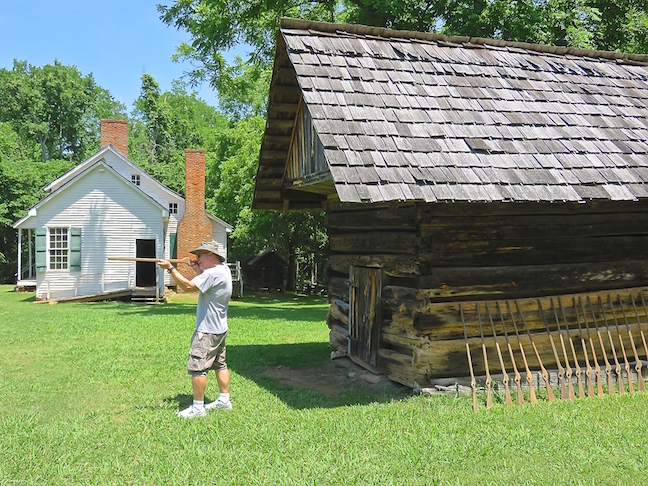
Captain Huck mounted a horse during the surprise attack and was shot in the head by John Carroll, who had loaded two balls in his rifle.
The Patriot forces attacked Huck’s encampment, in and around Williamson’s house, before dawn while many of the British were still sleeping.

Patriots steadied their rifles on a split rail fence. A witness said, “they took unerring and deadly aim” as their opponents emerged.
The little victory hugely improved Patriot morale and opened the door for Volunteers to pour in and join the partisan militia.
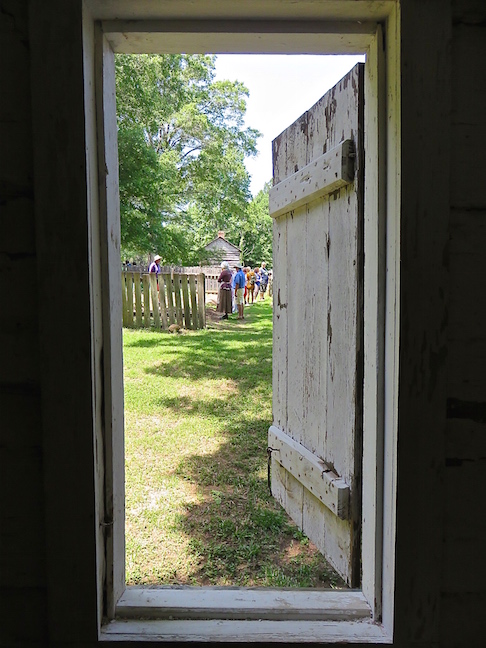
South Carolina historian Walter Edgar wrote, “The entire backcountry seemed to take heart. Frontier militia had defeated soldiers of the feared British Legion.”
The homestead was built by Dr. John Bratton between 1823 and 1826. John ‘s wife Harriet had 14 children.
Small slave houses made of brick were a sign of prestige. The houses for field workers were wooden and located closer to their job sites.
Bricks were made on site by slave labor and were not used here until the 19th century.
Every chore on the plantation was labor intensive. Slaves and livestock supplied the power to get things done.
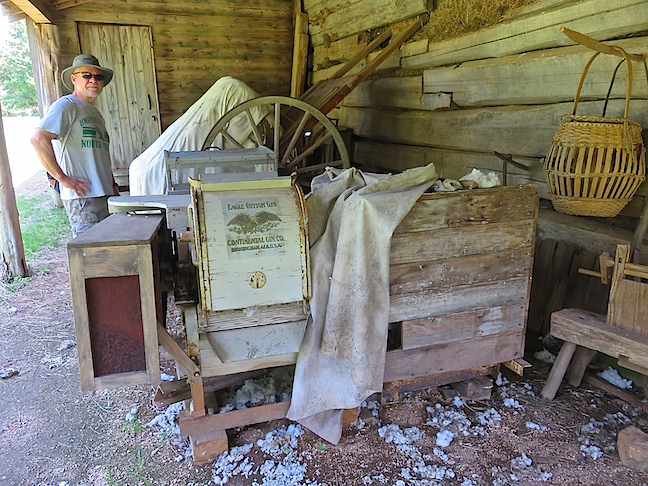
The Eagle Cotton Gin separated cotton from the seeds. It would have been run by mules or horses and produced 400 pound bales.
The USA was formed by the ideals and hard work of immigrants. The Brattons were Scotch-Irish that came to America in the 1730s and made a huge contribution toward the freedoms we enjoy today. It was an honor to learn more about our foreign Patriots on this Memorial Day.


